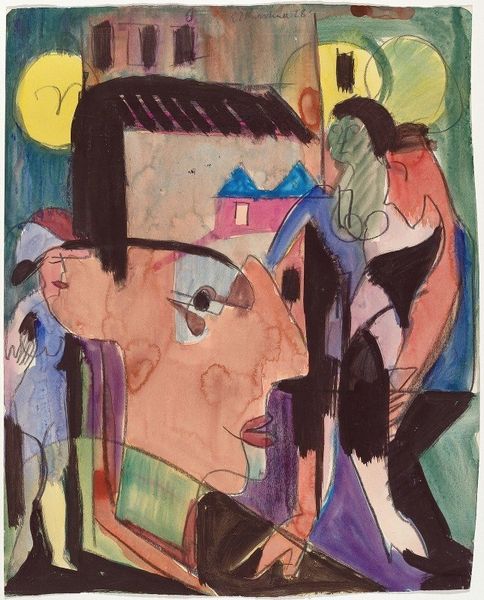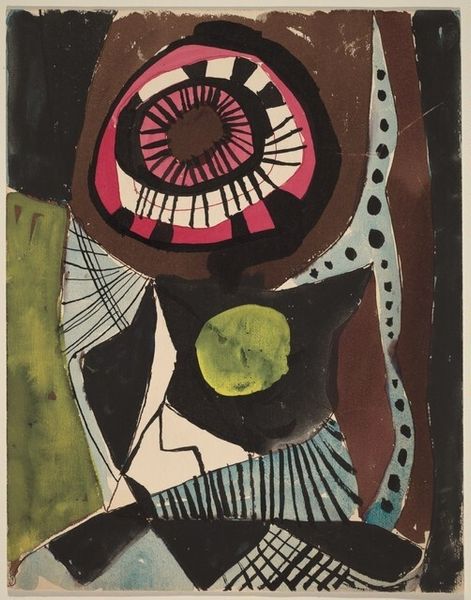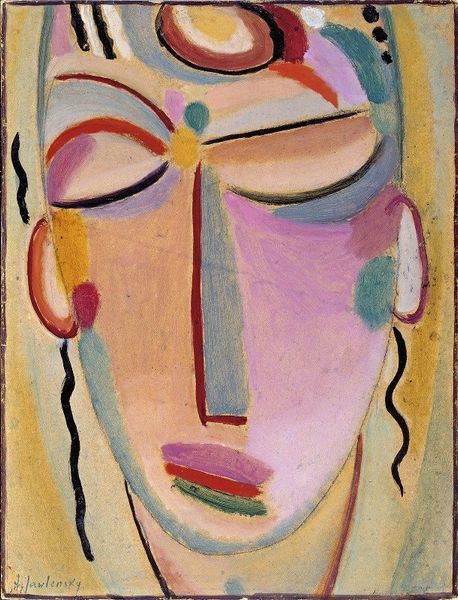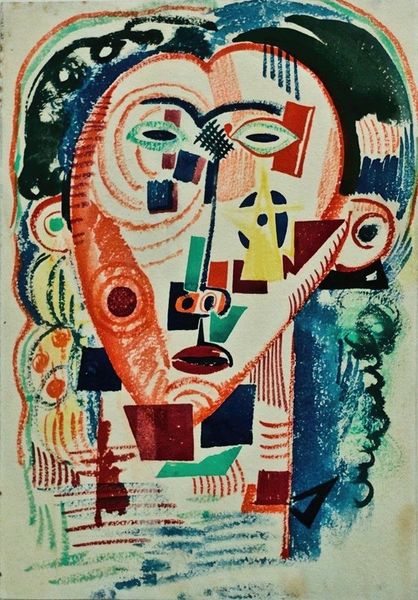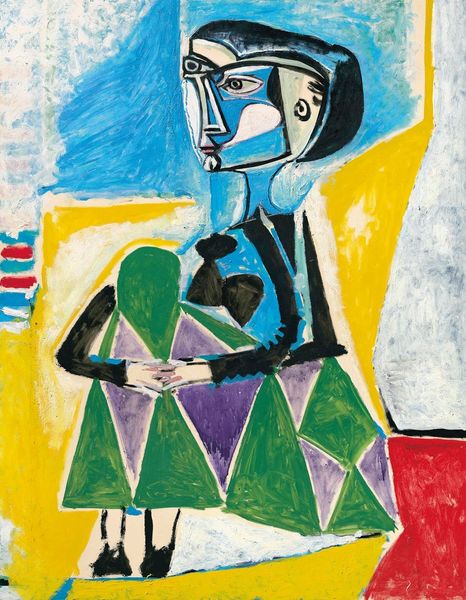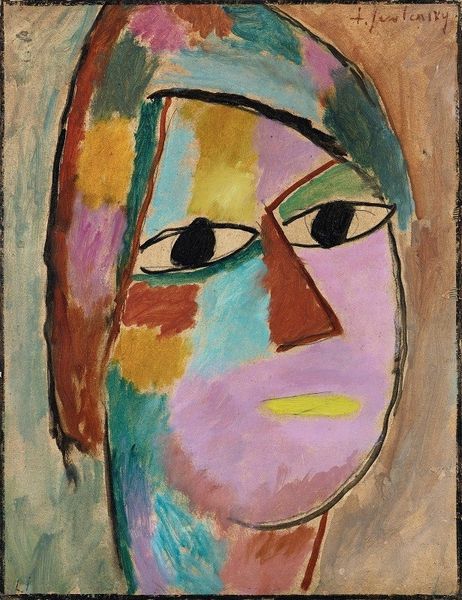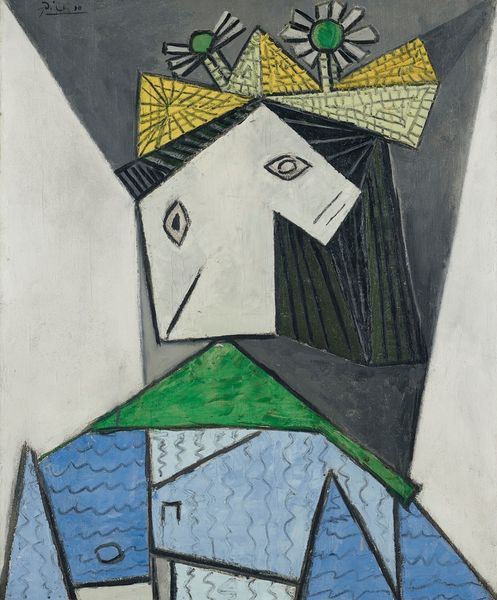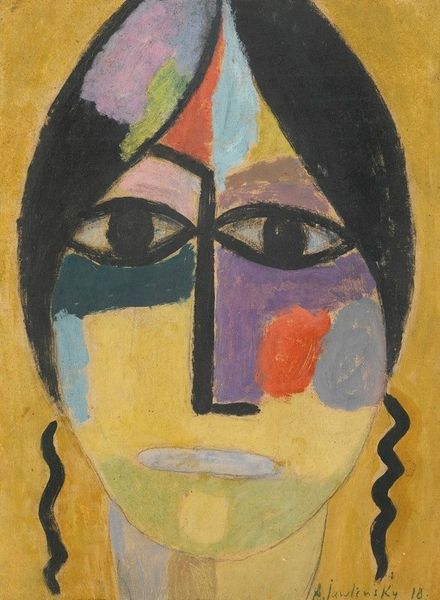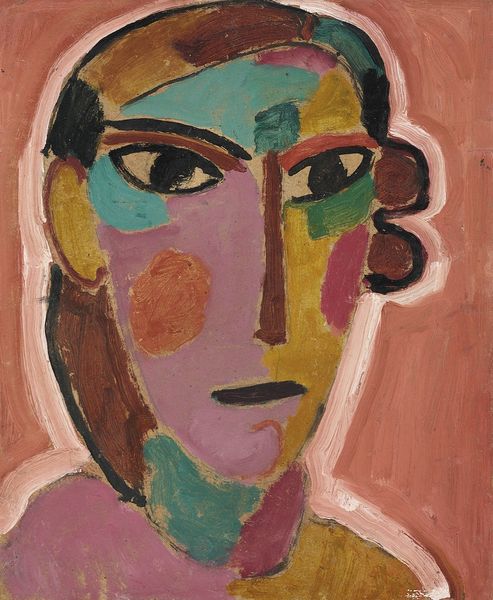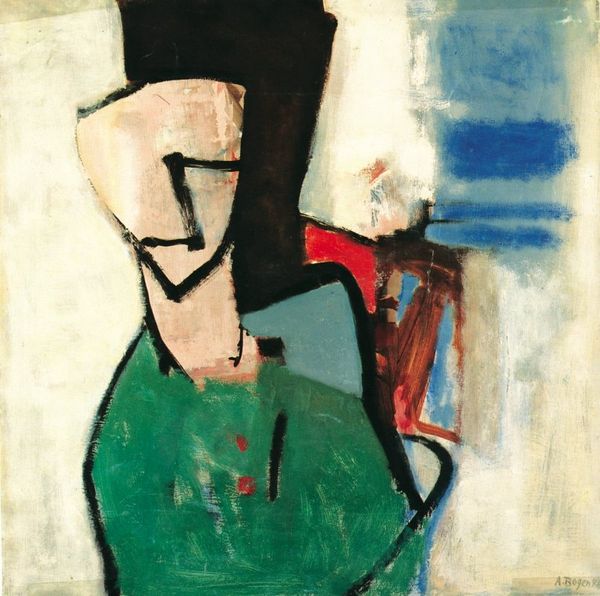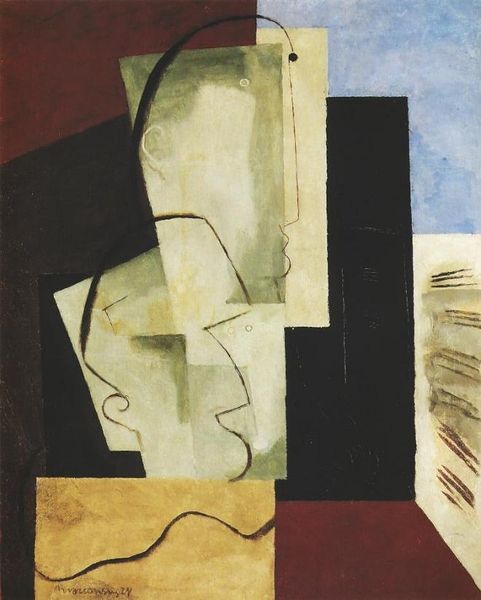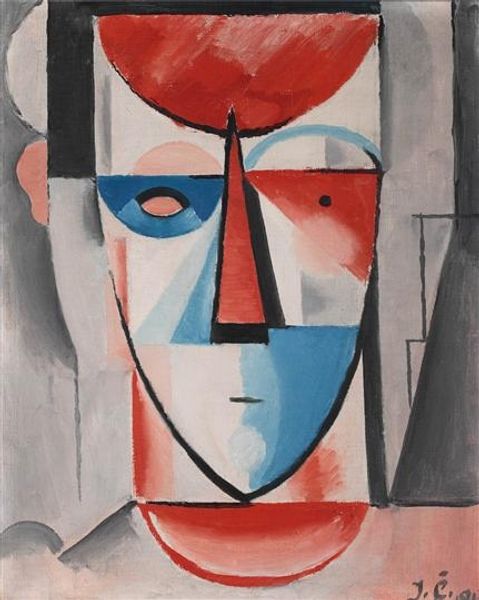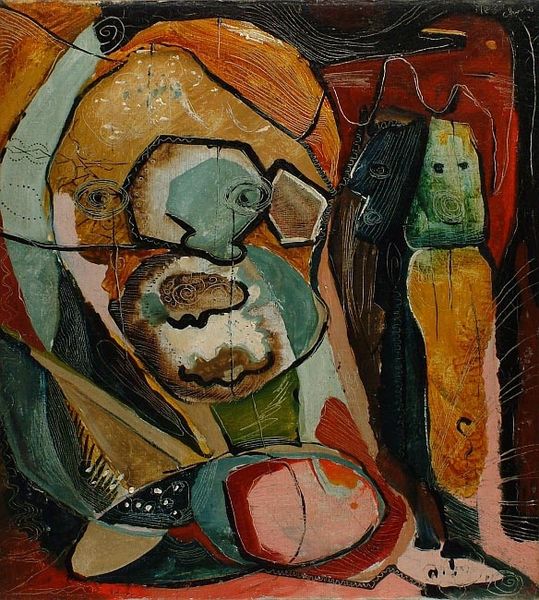
painting, oil-paint
#
portrait
#
cubism
#
abstract painting
#
painting
#
oil-paint
#
handmade artwork painting
#
painting painterly
#
modernism
Dimensions: overall: 66.04 × 45.72 cm (26 × 18 in.) framed: 86.36 × 63.5 × 3.18 cm (34 × 25 × 1 1/4 in.)
Copyright: National Gallery of Art: CC0 1.0
Curator: Standing before us is Alfred Maurer's "Abstract Heads," estimated to be from around 1931. He rendered it in oil paint, if you get close, you can see the wonderful layering of the oil and textures. Editor: It's striking! I’m immediately hit by the odd color palette for portraits—pale yellows, greens, and these strange floating…are those supposed to be eyes? It feels both intriguing and unsettling, like peering into a distorted mirror. Curator: Yes! The vibrant, almost jarring, color choices were central to Maurer's work as he broke from his earlier Impressionist style. What makes this compelling is the use of Cubist techniques to depict these figures, fracturing their forms and perspectives. Editor: I see what you mean. The planes that make up their faces almost overlap, creating a sense of dynamism and shifting identities. Was he trying to represent a more complex, internal view of the sitters? Curator: Precisely. By that period, around the late 1920s and early 1930s, Maurer experienced his personal life falling apart as recognition of his work was minimal, leading to, sadly, a profound despair. So you start wondering if this painting speaks to his inner emotional turmoil and fractured sense of self during that time. Editor: So the painting's not really about specific individuals anymore; instead, it becomes more about the psychological fragmentation inherent in modern life, perhaps even projecting his own disillusionment onto his subjects. It's a very modern take on portraiture, rejecting traditional ideals of representation. Curator: Exactly. By focusing less on likeness and more on expressing emotion through form and color, he really connects the modernist style. It's like the faces are disintegrating. Editor: And those almost clashing colors—that harsh green against the pale yellow, that disconcerting red. Curator: It really speaks to the angst of the era and his personal state. What begins as portraits really becomes something that's an existential question. Editor: Knowing that tragic context, it certainly shifts how I view the artwork. The disjointed shapes and uneasy colors suddenly resonate with deeper sadness and reflection on the human condition. Thank you for shedding that light on the painting. Curator: Thank you. Sometimes the darkness speaks louder than light when we allow it.
Comments
No comments
Be the first to comment and join the conversation on the ultimate creative platform.
